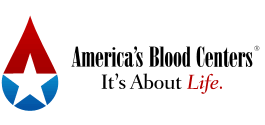Blood drive success requires planning. Follow the steps below for a successful blood drive and contact your local blood center.
Step 1: Enlist Support
Most successful corporate blood drives have the support of company leaders, who also participate in the program. For example, the CEO and the person in charge of the drive can:
a. Incorporate blood donation into
the company's community mission statement
b. Issue a joint memo encouraging employees to give blood
c. Issue a challenge/contest between divisions
d. Approve promotional materials to be used throughout the
company
e. Designate division coordinators/recruiters, etc.
Step 2: Set Dates
Successful corporate blood drives usually have a set date and time specified in advance with plenty of lead time. Choose to designate one day, two, or three times each year when corporate employees can give blood. Contact your community blood center at least three months prior to your desired date. Flexibility is key as the blood center may suggest alternative dates.
Step 3: Set Goals
Setting a goal or challenge for the company often inspires greater participation. The goal can be a total number of pints collected, or a percentage of employee participation.
Step 4: Find a Good Location
Some large corporations have chosen to create a fixed location in their headquarters for blood donations. This assures that the general flow of daily activity will never be interrupted by blood drive set up and take down. Generally, the local blood center runs the fixed site as a sub-center and is thus able to supply the medical and recruitment expertise needed on site for the corporation. Your partner community blood center will provide you with criteria to find the ideal blood drive location.
Step 5: Set Budget for Recognition or Rewards
The best reward is helping to save a life. Some companies chose to thank their donors by providing small recognition items such as food and giveaways.
Step 6: Provide Common Promotional Materials
Publicity can be arranged through each blood center, through your company, or as a partnership between the two organizations. Some ideas include promoting the drive in the corporate newsletter, printing posters, providing donor favors and/or a letter of encouragement from the CEO.
Step 7: Develop a Theme
As with any marketing project, developing a theme that resonates with the employees can encourage participation. For example, the James River Corporation, a paper manufacturer, has used the theme "Recycle Life" thus paralleling the purpose of the company's business with the purpose of the blood drive. This promotion can extend from your corporation to its suppliers and the community by printing or using stickers with the theme and corporate logo on other marketing tools.
Step 8: Chart Progress with a Database
This may be important for your company depending on how large the drive becomes. Companies with established blood donation programs use databases to keep track of all their blood drive statistics. This information can be used for public relations projects, as well as to help with future drives. Also, share these statistics with the executive management team within your organization to keep blood donation in the forefront of their minds, and highlight community support.
*Disclaimer*
Non-solicitation Rules Exempt Blood Drives
The National Labor Relations Act (PDF 701KB) allows employers to have blanket non-solicitation rules that have the effect of keeping union organizing activities off their property. However, the National Labor Relations Board has recognized an exception, while giving employers a limited number of charitable solicitations, such as blood drives, while continuing to enforce a general non-solicitation rule.









